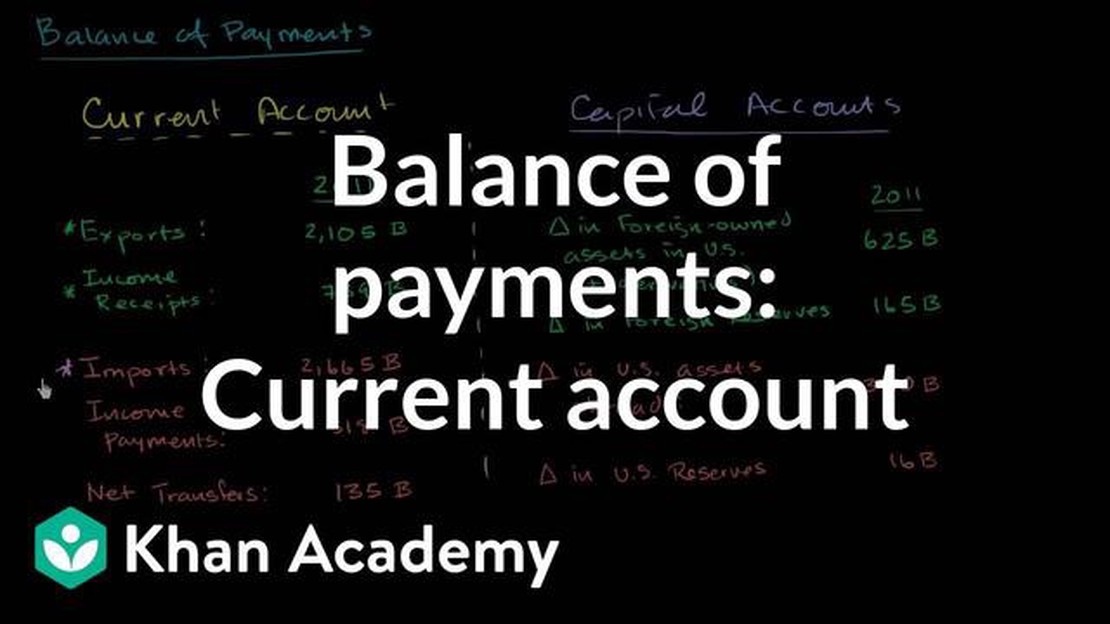Learn About Effective CTA Examples and Improve Your Conversion Rates
Examples of CTA (Call to Action) When it comes to driving conversions on your website, a strong call-to-action (CTA) is essential. A well-crafted CTA …
Read Article
In today’s globalized world, trade and payment are fundamental aspects of the global economy. With businesses operating on an international scale, it is essential to have a clear understanding of the basics of trade and payment in order to navigate the complexities of the modern business landscape.
Trade refers to the exchange of goods and services between countries or regions. It is driven by the principle of comparative advantage, which states that each country should specialize in producing goods or services in which it has a lower opportunity cost, and then trade with other countries for goods or services in which they have a higher opportunity cost. This allows countries to benefit from the production and consumption of a wider variety of goods and services.
Payment, on the other hand, is the process of transferring funds from one party to another in exchange for goods or services. It plays a crucial role in facilitating trade, as it allows for the settlement of transactions between buyers and sellers. There are various methods of payment, including cash, checks, credit cards, and electronic transfers, each with its own advantages and disadvantages. It is important for businesses to choose the most suitable payment method based on factors such as cost, security, and convenience.
Understanding the basics of trade and payment is not only important for businesses, but also for individuals. Whether you are a consumer purchasing goods from overseas or a small business looking to expand into international markets, having a solid grasp of the fundamentals will help you make informed decisions and navigate the complexities of the global economy.
“Trade and payment are essential components of the global economy and understanding their basics is crucial for businesses and individuals alike.”
In this article, we will explore key concepts related to trade and payment, including trade barriers, international trade organizations, types of payment methods, and the role of technology in facilitating trade and payment. By the end, readers will have a comprehensive understanding of the fundamentals and be equipped with the knowledge to navigate the ever-changing world of trade and payment.
Trade and payment are essential components of the global economy. Understanding the basics of these concepts is crucial for conducting successful business transactions and ensuring smooth financial operations.
Trade refers to the exchange of goods and services between countries or regions. It allows countries to specialize in producing goods and services in which they have a comparative advantage, leading to increased overall efficiency and productivity. International trade fosters economic growth, creates employment opportunities, and promotes cultural exchange.
There are two main types of trade: international trade and domestic trade. International trade involves the exchange of goods and services across borders, while domestic trade refers to transactions within a country. Both types of trade require careful consideration of various factors, such as tariffs, regulations, and transportation logistics.
Payment is the transfer of money or value in exchange for goods or services. It is an integral part of any trade transaction. Payments can be made through various methods, including cash, checks, credit cards, electronic transfers, or digital currencies. It is important to choose a secure and convenient payment method that suits the needs of both the buyer and the seller.
When engaging in international trade, businesses must also consider foreign exchange and currency conversion. Different countries have different currencies, and exchange rates fluctuate, which can affect the value of payments and profits. Understanding exchange rates and managing currency risks is essential for effective international trade operations.
Furthermore, trade financing options, such as letters of credit, trade credit, and export financing, play a vital role in facilitating trade transactions. These financial tools provide businesses with the necessary funds and risk management solutions to navigate the complexities of international trade.
In conclusion, trade and payment are fundamental aspects of global commerce. By understanding the basics of trade and payment, businesses can enhance their competitiveness, expand their market reach, and build strong relationships with customers and partners worldwide.
Read Also: Regulators of National Australia Bank Limited: A Comprehensive Guide
Trade is the exchange of goods and services between two or more parties. It is an essential part of any economy and has been practiced for centuries. In this section, we will explore the fundamentals of trade and its importance in the global economy.
Read Also: Buying and Selling at the Same Time Strategy: Maximizing Profits with Simultaneous Trades2. Goods and Services: Trade involves the exchange of goods, which are tangible items that can be touched and felt, such as clothes, food, or electronics. It also involves services, which are non-tangible actions performed by individuals or businesses, such as consulting, transportation, or healthcare. 3. Supply and Demand: Trade operates on the principles of supply and demand. Supply refers to the quantity of a good or service that is available for sale, while demand represents the desire and purchasing power of buyers for that good or service. When supply and demand are in balance, trade occurs. 4. Markets: Trade takes place in markets, which are physical or virtual spaces where buyers and sellers come together to exchange goods and services. Markets can be local, national, or global in nature and can take various forms, such as traditional marketplaces, online platforms, or financial exchanges. 5. Import and Export: Trade can occur within a country’s borders, known as domestic trade, or between countries, known as international trade. When a country buys goods or services from another country, it is known as an import. Conversely, when a country sells goods or services to another country, it is known as an export.
 6. Trade Agreements: Governments often negotiate trade agreements to establish rules and regulations that govern trade between countries. These agreements aim to promote fair trade practices, reduce trade barriers, and facilitate the flow of goods and services across borders. Examples of trade agreements include NAFTA, the EU, and the WTO.
7. Trade Financing: Trade often involves the use of various financing options to facilitate transactions. These options can include letters of credit, trade insurance, or export financing. Trade financing helps mitigate risks and provides the necessary funds to support trade activities.
6. Trade Agreements: Governments often negotiate trade agreements to establish rules and regulations that govern trade between countries. These agreements aim to promote fair trade practices, reduce trade barriers, and facilitate the flow of goods and services across borders. Examples of trade agreements include NAFTA, the EU, and the WTO.
7. Trade Financing: Trade often involves the use of various financing options to facilitate transactions. These options can include letters of credit, trade insurance, or export financing. Trade financing helps mitigate risks and provides the necessary funds to support trade activities.
Overall, trade plays a crucial role in the global economy, promoting economic growth, job creation, and innovation. Understanding the fundamentals of trade can help individuals and businesses navigate the complex world of international commerce and take advantage of the opportunities it offers.
Trade refers to the buying and selling of goods and services between two or more parties. It can be done domestically or internationally.
There are several types of trade, including domestic trade, international trade, bilateral trade, multilateral trade, and barter trade.
Payment in trade refers to the transfer of money, goods, or services from the buyer to the seller in exchange for the purchased goods or services. It is an essential part of any trade transaction.
The commonly used methods of payment in trade are cash, checks, electronic funds transfer, credit cards, and online payment systems like PayPal.
Examples of CTA (Call to Action) When it comes to driving conversions on your website, a strong call-to-action (CTA) is essential. A well-crafted CTA …
Read ArticleUnderstanding Bid Ask in Option Trading Option trading is a complex and dynamic market where investors can speculate on the future movement of an …
Read ArticleWhat does Bspce stand for? BSPCE stands for Bons de Souscription de Parts de Créateur d’Entreprise, which translates to “Founder Share Subscription …
Read ArticleHow much money do you need for NinjaTrader? If you are interested in trading and considering using NinjaTrader as your trading platform, one of the …
Read ArticleTrading Options When a Stock is Halted: What You Need to Know When a stock is halted, it means that trading in that particular stock has been …
Read ArticleUnderstanding the Mechanics of the 1000Pip Climber System Are you tired of the ups and downs in your forex trading? Do you want a reliable system that …
Read Article